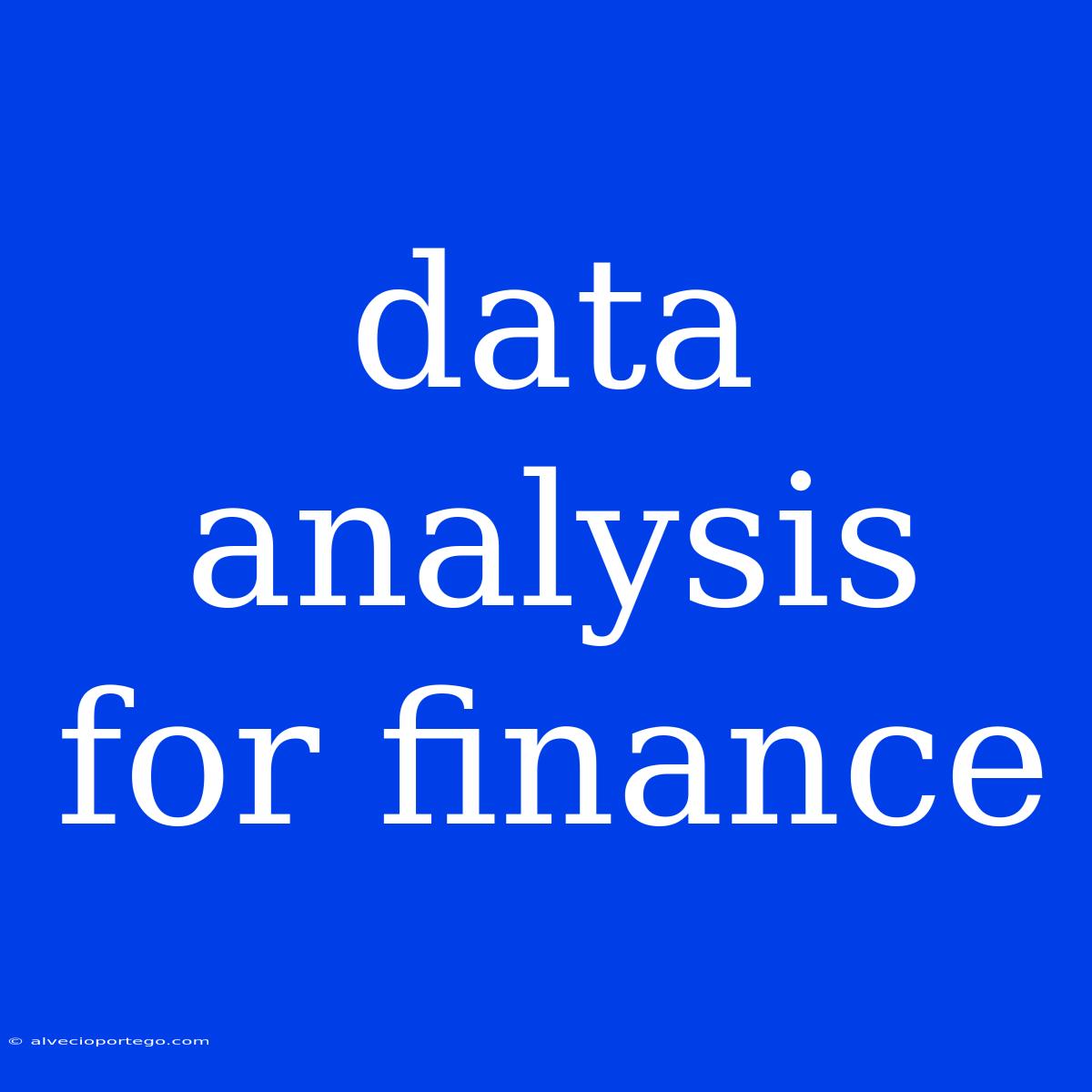Data Analysis for Finance: Unlocking Insights and Driving Growth
In the ever-evolving landscape of finance, data analysis has become an indispensable tool, empowering financial institutions to make informed decisions, mitigate risks, and unlock new opportunities for growth. This article delves into the key aspects of data analysis for finance, exploring its applications, benefits, and challenges.
Why is data analysis essential for finance?
Data analysis allows financial professionals to gain a deeper understanding of market trends, customer behavior, and investment performance. By leveraging powerful tools and techniques, they can:
- Identify patterns and trends: Analyzing historical data can reveal cyclical patterns, market sentiment shifts, and emerging investment opportunities.
- Predict future outcomes: By developing predictive models, financial analysts can forecast market movements, assess credit risk, and estimate returns on investment.
- Optimize portfolio performance: Data analysis helps in building and managing diversified portfolios that align with specific risk tolerances and return goals.
- Improve risk management: Analyzing data on past credit defaults, market volatility, and economic indicators aids in identifying and mitigating potential risks.
- Enhance customer service: By understanding customer needs and preferences through data analysis, financial institutions can personalize services and build stronger relationships.
Key Applications of Data Analysis in Finance
Data analysis plays a crucial role in various areas of finance, including:
1. Investment Management:
- Quantitative analysis (Quant): Algorithms and statistical models are used to identify trading opportunities based on data patterns.
- Risk management: Assessing and mitigating investment risks through data-driven analyses of market volatility, credit risk, and other factors.
- Performance measurement: Evaluating investment portfolio performance against benchmarks and identifying areas for improvement.
2. Banking and Credit Risk Management:
- Credit scoring: Predicting the likelihood of borrowers defaulting on loans using data analysis techniques.
- Fraud detection: Detecting unusual activity in bank accounts and financial transactions through data analysis.
- Customer relationship management (CRM): Using data to understand customer behavior, tailor services, and personalize offers.
3. Insurance:
- Pricing and underwriting: Setting premiums and assessing risk based on data analysis of demographics, driving habits, and other relevant factors.
- Claims management: Identifying fraudulent claims and automating claim processing with data analytics.
- Customer segmentation: Grouping customers with similar characteristics and offering personalized insurance products.
4. Regulatory Compliance:
- Risk reporting: Analyzing data to meet regulatory reporting requirements and ensure compliance with financial regulations.
- Anti-money laundering (AML): Utilizing data analytics for detecting and preventing money laundering activities.
- Know Your Customer (KYC): Verifying customer identities and understanding their financial activities.
The Benefits of Data Analysis in Finance
- Improved decision-making: Data-driven insights empower financial professionals to make more informed and strategic decisions.
- Enhanced efficiency: Automating tasks through data analysis tools can streamline processes, save time, and reduce errors.
- Competitive advantage: By leveraging data analysis, financial institutions can differentiate themselves in a competitive market by offering superior products and services.
- Increased profitability: Data-driven insights can lead to more efficient resource allocation, improved risk management, and ultimately, higher profitability.
Challenges of Data Analysis in Finance
Despite its immense potential, data analysis in finance faces several challenges:
- Data quality: Ensuring the accuracy, completeness, and consistency of data is crucial for effective analysis.
- Data volume and complexity: Handling massive datasets and managing complex data structures requires advanced tools and expertise.
- Privacy and security: Financial institutions must comply with strict regulations and protect sensitive customer data.
- Interpretation and communication: Extracting meaningful insights from complex data and communicating them effectively to stakeholders can be challenging.
The Future of Data Analysis in Finance
As technology continues to evolve, the role of data analysis in finance will become increasingly vital. Advancements in areas such as:
- Artificial intelligence (AI): AI-powered algorithms can automate complex tasks, identify patterns, and provide real-time insights.
- Machine learning: Machine learning models can learn from data and improve their predictive capabilities over time.
- Big data analytics: Analyzing massive datasets allows for deeper insights and more comprehensive understanding of market trends.
Data analysis will continue to revolutionize the financial industry, enabling institutions to make smarter decisions, manage risk more effectively, and drive innovation.

